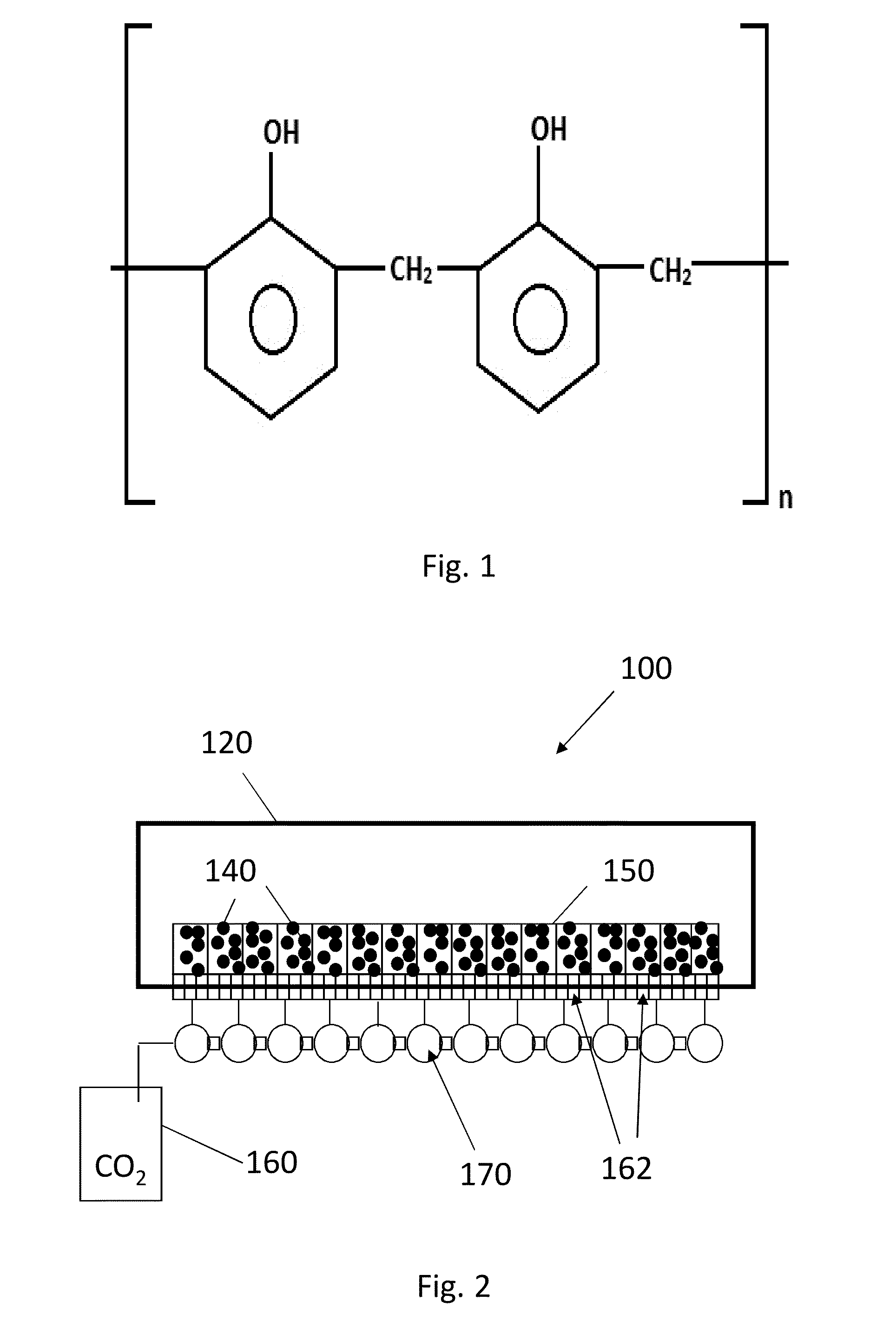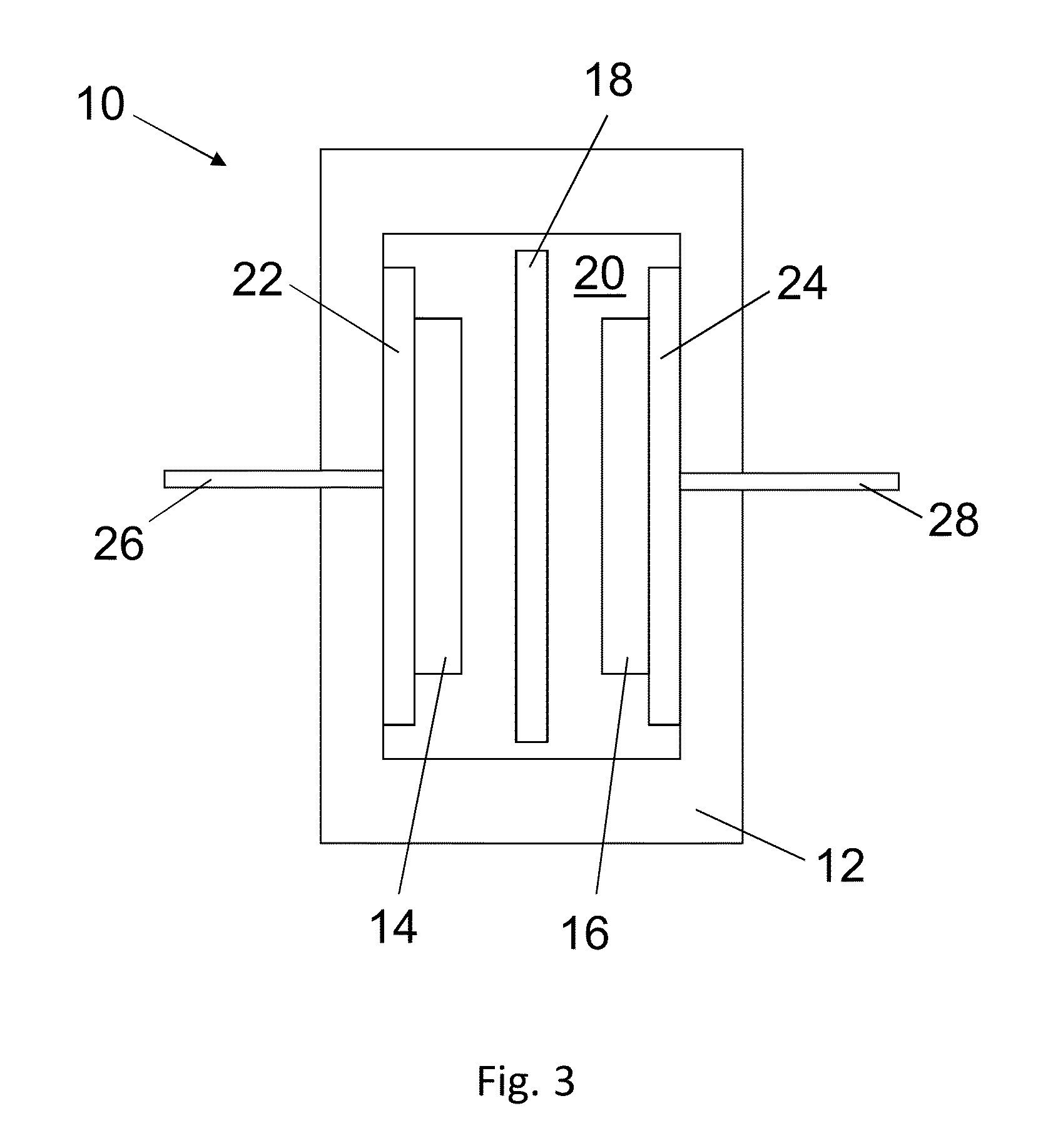Carbon for high voltage EDLCs
a technology of edlcs and carbon, applied in the field of physical activation of resin-based carbon, can solve the problems of unfavorable agglomeration of mixtures, inability to achieve physical activation, and increase complexity and cost of the overall process, so as to achieve cost reduction
- Summary
- Abstract
- Description
- Claims
- Application Information
AI Technical Summary
Benefits of technology
Problems solved by technology
Method used
Image
Examples
example 1
[0080]Novolac resin (resin type A, Qingdaoheli Chemical Co., Shandong, China) was cured at 150° C., ground to an average particle size (D50) of about 5 microns, and then carbonized at 800° C. for 2 hours. The carbonized resin (10 g) was activated at 975° C. for 2.5 hours using a CO2 flow rate of 12 L / m. In a button cell with a 1.5M TEA-TFB electrolyte (in acetonitrile), the activated carbon had a volumetric capacitance of 84 F / cc. This carbon was evaluated for potential window performance in the same electrolyte and had a potential window of 3.5V. The pore size distribution of the Example 1 activated carbon is shown in FIG. 4.
example 2
[0081]The novolac resin as cured and carbonized in example 1 (10 g) was activated at 950° C. for 3 hours with a CO2 flow rate of 12 L / m. The slightly lower activation temperature resulted in an activated carbon that had a volumetric capacitance of 39 F / cc.
example 3
[0082]The novolac resin as cured and carbonized in example 1 (10 g) was activated at 975° C. for 3 hours with a CO2 flow rate of 12 L / m. The slightly longer activation time resulted in an activated carbon that had a volumetric capacitance of 55 F / cc.
PUM
| Property | Measurement | Unit |
|---|---|---|
| size | aaaaa | aaaaa |
| size | aaaaa | aaaaa |
| size | aaaaa | aaaaa |
Abstract
Description
Claims
Application Information
 Login to View More
Login to View More - R&D
- Intellectual Property
- Life Sciences
- Materials
- Tech Scout
- Unparalleled Data Quality
- Higher Quality Content
- 60% Fewer Hallucinations
Browse by: Latest US Patents, China's latest patents, Technical Efficacy Thesaurus, Application Domain, Technology Topic, Popular Technical Reports.
© 2025 PatSnap. All rights reserved.Legal|Privacy policy|Modern Slavery Act Transparency Statement|Sitemap|About US| Contact US: help@patsnap.com



